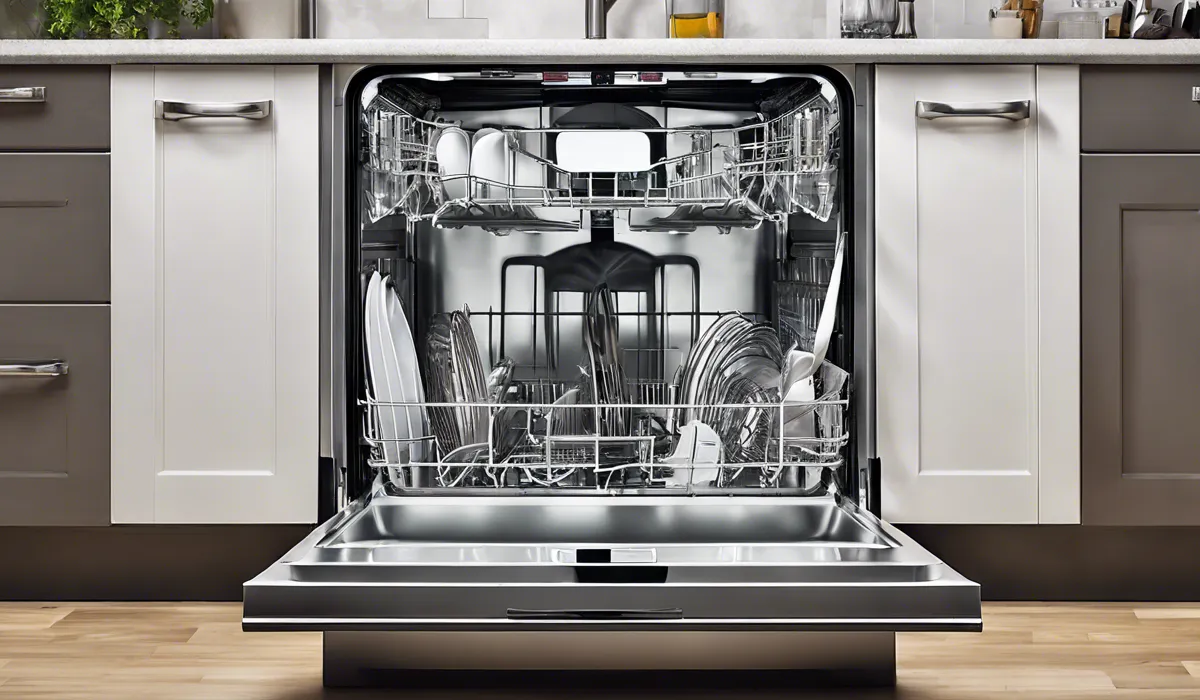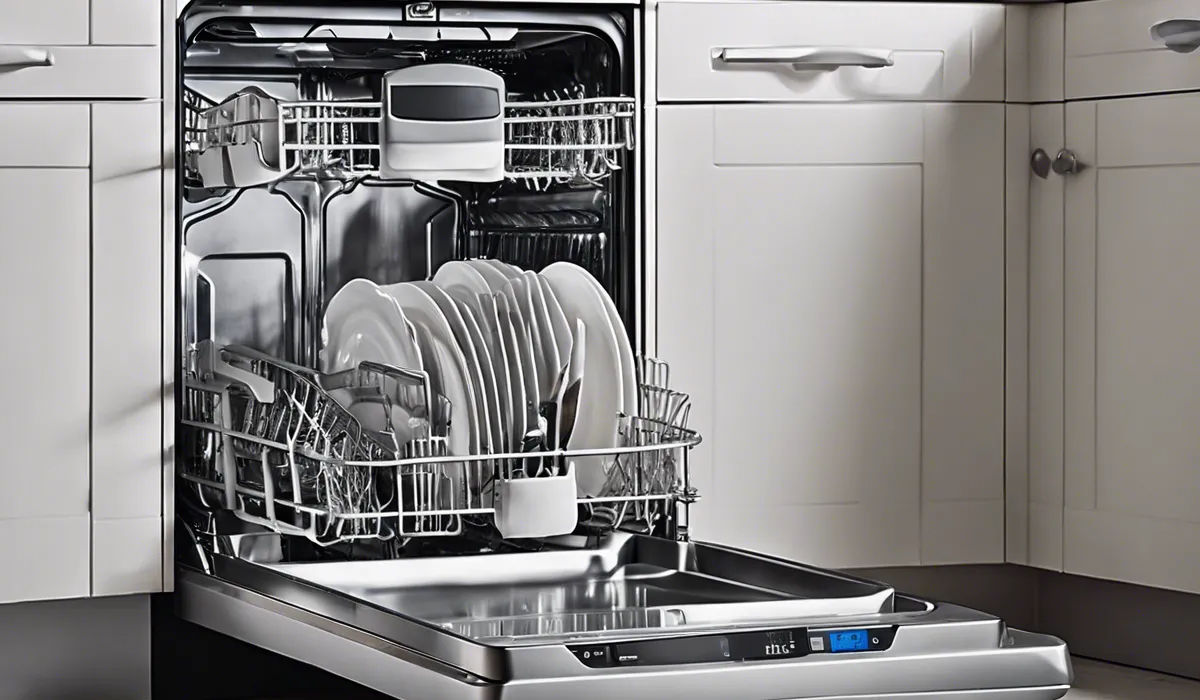How to Level a Dishwasher: Quick & Easy Alignment Guide
To level a dishwasher, adjust the front legs by twisting them clockwise to raise or counterclockwise to lower the unit. Use a level on the top of the dishwasher to check for evenness. Repeat with rear legs or use shims if rear legs are non-adjustable.
Preparing to Level Your Dishwasher

Gathering Necessary Tools
Before starting the leveling process, it is essential to have the right tools on hand. You will need an adjustable wrench, a screwdriver, and a level.
The level is crucial as it will indicate whether the dishwasher is even from front to back and side to side. A flashlight might also be helpful to see under the dishwasher when adjusting the feet.
Turning Off the Power and Water Supply
Safety first. Make sure to turn off the power to your dishwasher at the circuit breaker.
It’s also wise to shut off the water supply to prevent any accidental leaks or water damage while you work. This step is non-negotiable and ensures your safety throughout the process.
Sliding Out the Dishwasher
If your dishwasher is not easily accessible, you may need to slide it out from under the counter.
Be gentle to avoid damaging your flooring or the appliance itself. You might need to unscrew the dishwasher from the countertop or the cabinetry.
Keep any screws or brackets in a safe place so you can reattach them later.
Adjusting the Dishwasher Feet

Checking the Dishwasher’s Current Level
Place the level on the bottom of the dishwasher, first checking front-to-back, then side-to-side.
Observe the bubble’s position; it should be centered between the lines if your dishwasher is level. If it’s not, you will need to adjust the feet accordingly.
Locating the Dishwasher’s Adjustable Feet
Look under the dishwasher to locate the adjustable feet. Most dishwashers have four feet—one at each corner.
Some models may have a panel that you need to remove to access the feet. Use the flashlight if the area is not well-lit.
Adjusting the Feet
Turn the feet clockwise to raise or counterclockwise to lower the dishwasher. Make small adjustments, then recheck the level.
It can be helpful to have someone assist you by tilting the dishwasher slightly, or by checking the level while you make the adjustments. Remember, patience is key; it may take a few tries to get it just right.
Continuous Level Checking
After each adjustment, place the level back on the dishwasher to check your progress.
It’s important to achieve an even level to prevent operational issues and to ensure that your dishwasher doors will close properly, providing a tight seal during wash cycles.
Securing and Testing the Dishwasher

Tightening the Lock Nuts
If your dishwasher’s feet have lock nuts, make sure to tighten them once you have achieved the perfect level. This will prevent the feet from shifting out of place during the dishwasher’s operation.
Ensuring the Dishwasher is Flush with Cabinetry
After adjusting and securing the feet, make sure the dishwasher fits snugly back into its space.
The front should be flush with your cabinetry, with no gaps or unevenness.
Also, ensure that the dishwasher does not wobble, which could indicate that it is still not level or that the feet are not evenly secured.
Reconnecting Power and Water Supply
Once you are satisfied with the leveling, reconnect the power and water supply. Be sure to double-check that the connections are secure to prevent any electrical issues or water leaks.
Running a Test Cycle
Finally, run a test cycle to confirm that the dishwasher operates correctly. There should be no leaks, strange noises, or other issues. If everything looks good, you can breathe a sigh of relief and enjoy the benefits of your well-leveled dishwasher.
Remember, a level dishwasher is not just about efficiency; it’s also about extending the life of your appliance and ensuring the best performance.
If you encounter any issues during this process or if you’re not confident in your ability to level the dishwasher on your own, do not hesitate to contact a professional.
FAQs About Leveling a Dishwasher
How do you adjust the front legs of a dishwasher to level it?
Adjust the front legs by twisting them clockwise to raise the dishwasher or counterclockwise to lower it until the unit is level.
What is the best way to check if a dishwasher is level?
Place a level on the top of the dishwasher to ensure it is horizontally even from front to back and side to side.
What should you do if the rear legs of a dishwasher are not adjustable?
If the rear legs are non-adjustable, use shims to level the back of the dishwasher by sliding them under the legs until even.
Can you adjust the rear legs the same way as the front legs on a dishwasher?
If the rear legs are adjustable, you can twist them in the same manner as the front legs to level the dishwasher. If not, you will need to use shims.
How do you know when to stop adjusting the legs of your dishwasher?
Stop adjusting the legs when the bubble in the level is centered, indicating that the dishwasher is even on both the horizontal and vertical axes.
Final Thoughts
Leveling a dishwasher involves adjusting the front legs by twisting them to raise or lower the appliance until even. A level placed on top of the dishwasher ensures accuracy.
For non-adjustable rear legs, shims may be necessary to achieve balance. Consistent checking and adjustment ensure the dishwasher is perfectly horizontal and stable.





